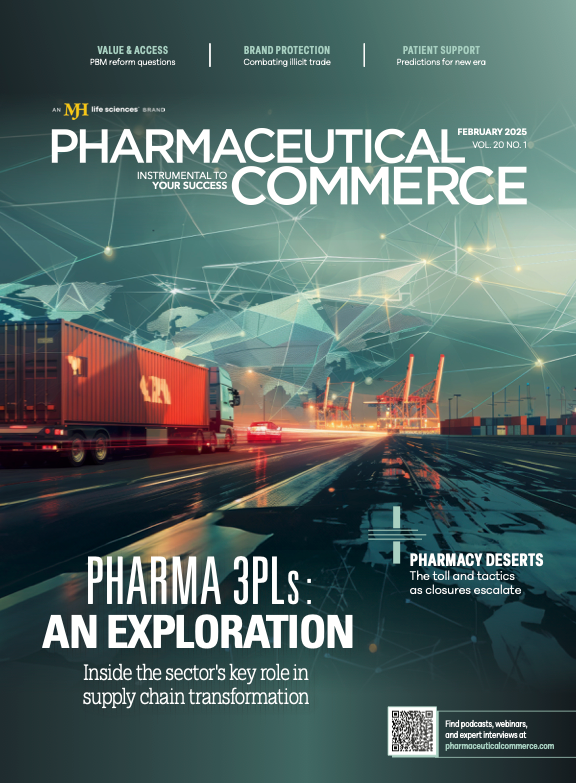Popping the Gross-to-Net Bubble, Part II: What Manufacturers Can Do About It
A look at the actionable steps needed to elicit change.

Welcome to the second installment of the “Popping the Gross-to-Net Bubble” series. In this column, I’ll dive into actionable steps pharmaceutical manufacturers can take to address this issue. This series is not intended as an academic review of the concept or problem but rather as a practical toolset for commercial teams, drawing from my 25 years of experience working on these challenges.
The manufacturer’s role in expanding gross revenue
The concept of gross-to-net (GTN) optimization has been central to the pharmaceutical industry since the mid-to-late 1990s. However, the problem on the net revenue side stems directly from challenges on the gross revenue side, which arguably accelerated in the early 2000s with the rise of specialty pharmaceuticals. While it may be uncomfortable for some to acknowledge, pharma manufacturers have naturally and willingly participated in the inflation of the GTN metric.
First, let’s take a step back. When I launched my consulting practice in late 2001, I noticed several key drivers of pricing decisions.
- Scientific and commercial disconnect. Manufacturers were experts in their science and in selling to physicians and consumers. However, payers were beginning to flex their influence, and manufacturers were unprepared.
- Lack of coordination on pricing. Commercial functions were often siloed, with little collaboration around pricing strategy. Finance and government pricing have typically only been involved to measure the impacts of decisions but is not part of the strategic rationale or decision-making process of how and when discount levels were decided.
- Discounting without net revenue strategy. Few leaders of manufacturers could effectively articulate the nuances of their discounting strategies. As an example, why was the rebate to a payer 40% and not 37%? The role of market access, which has the biggest impact of the GTN phenomenon, is tasked with formulary positions. Some market access teams had unchecked authority to discount at will. Field sales could establish discounting strategies to provider offices for medical benefit products, as they were the primary influencers of product choice for this type of product. Distributors relied on speculative buying margins, and manufacturers often couldn’t calculate the cost of the distribution channel, but some distributors were able to buy as much as six months of product (pre-Sarbanes Oxley) against double-digit price increases.
At the time, the GTN calculation wasn’t a strategy; it was the measurement of the pricing decisions made by disparate teams, and the role of finance and government pricing was simply to measure the impact of the decisions—not to provide guidance or counsel.
One of our first service offerings was to document all spending and package it in a way that allowed senior leaders, brand managers, and finance teams to understand costs by payer, pharmacy/site of care, distributor, and patient. However, most manufacturers dismissed the need for optimization, relying instead on annual price increases of 9% to 10% in order to maintain margins. It was hard to argue with their logic, as it had worked at the time.
The turning point: Medical benefit and the Medicare Modernization Act
Between 2003 and 2005, everything changed. The precursor documents for the Medicare Modernization Act from the Government Accountability Office and the Congressional Budget Office signaled a shift. The government planned to transition medical benefit products from an average wholesale price-based model to an average selling price (ASP)-based model.
This shift introduced a reimbursement mechanism that required manufacturers to think holistically about their broad discounting strategies and accurately captured discounts. Furthermore, the ASP model, with its two-quarter lag, acted as a natural limiter on price increases. If a manufacturer raised prices beyond 1.5% twice a year, provider offices administering the product could face significant losses, as reimbursement would lag behind the price increase. For products reimbursed at ASP plus 6%, this created a major disincentive for aggressive price hikes.
This change marked the first real example of GTN optimization, and remains the playbook for GTN optimization for medical benefit. Manufacturers began to rationalize discounts to align wholesale acquisition cost (WAC) with ASP. Here’s how it played out.
- Eliminating payer discounts. For medical benefit products, payers didn’t manage discounts as aggressively as they do now. Discounting to a payer only reduced ASP and, therefore, reimbursement. Removing these discounts was an easy decision. The contemporary view here is very important. While there were 30 or so medical benefit products that received payer discounts about 10 years ago, this number crept into the low 100s in the 2020s with the arrival of biosimilars. Like a siren on the rocks, manufacturers that are lulled into payer discounts on medical benefit products find themselves in a very precarious position with providers. As many biosimilar manufacturers are realizing now, one of the first questions a buy-and-bill provider office will ask is “are you contracted with payers?” If the answer is yes, the opportunity to detail the product is typically over as the provider’s office will understand that the WAC:ASP ratio will likely be off, and the net cost recovery of the product is expected to be negative.
- Pulling back distributor discounts. Distributors were already moving away from speculative price increase models. By removing prompt-pay cash discounts and shifting to bona fide fair market value (FMV) service fees, distributors could retain margin without competition—as FMV fees cannot legally be passed on to downstream buyers. This is still an important aspect of managing not only the GTN but the total net value of the sale. Overspending for distribution does not yield any incremental value. The company that spends 10% gets the same, and often less, than the company that spends 1.25%. This can be a little trickier to maneuver, but the use of exclusive distribution networks in specialty or highly limited networks are great tools. With the growth of exclusive distribution networks, with rare exception, all clinics and all hospitals buy from all specialty distributors. This is harder with products with more commoditized products—such as biosimilars and specialty generics—but practical for reference products.
- Gradually reducing provider discounts. This was the most challenging area, especially when group purchasing organizations (GPOs) were involved. Manufacturers adopted multi-year strategies, pulling back discounts incrementally by 25-50 basis points per year. While potentially painful in the short term, this proved to be powerful in the long term. This remains the hardest of the areas to optimize GTN, especially if the manufacturer has been discounting aggressively. For buy-and-bill products, however, usually as the WAC:ASP ratio widens, the use of the Assignment of Benefit (AOB) model increases, and the alternative sites of care come into the picture. Unwinding these scenarios are not impossible, but it’s a lot to unwind. Even with a modest differential in the WAC:ASP, it will take roughly 18 months to undue short-term discounting.
Collaboration as a success factor
As we have now been doing this for products on market and new products, going through this process reveals a critical insight for GTN optimization: cross-functional collaboration was essential. Marketing, field sales, market access, trade, and patient services teams have to work together to develop comprehensive pricing strategies, but unfortunately, these groups don’t naturally align together. Going forward, it is our firm’s strong belief that the best laid out plans need to be completed by new product planning early in the development cycle, either Phase II or very early in Phase III, and finance and government pricing teams need to be in a strategic, not a supporting role, governing these decisions and not simply measuring them. This collaborative approach, while still relatively rare, proves highly successful.
Challenges in pharmacy benefit
On the pharmacy benefit side, the dynamics are different. Pharmacy benefit managers (PBMs) have consistently consolidated and gained power as drug classes become more and more crowded. Despite price increase caps set by PBMs and government penalties like the Medicaid unit rebate amount consumer price index (CPI-U) penalty (introduced in 1993), manufacturers will often still raise price above the CPI for a given period, take the short-term win, and pay the longer-term penalty.
Not surprisingly, payers, pharmacies, distributors, and GPOs all tolerate and encourage these price increases because they benefit from higher prices. This is exemplified in all of their warnings in the market today related to lowering WACs. It’s obvious to anyone in the industry, but any entity earning a percentage of the list price profits from the inflation. The true burden falls on plan sponsors (governments, employers, and unions) and patients.
The entire industry enables the inflation of GTN. Blaming any one party is nothing more than propaganda and misses the systemic nature of the issue.
Looking ahead
In the next installment, I’ll explore the pharmacy benefit landscape in greater detail, examining examples of pricing strategies for first-in-class drugs versus those in mature categories with years of price increases.
For those frustrated by the system, it’s worth noting that several key loopholes have been closed through legislation at both the federal and state levels over the past 15-20 years. I’ll cover these reforms in upcoming columns.
About the Author
Bill Roth is General Manager and Managing Partner of IntegriChain’s consulting business, which includes Blue Fin Group, a strategy consulting company he started in 2001, and the IntegriChain advisory services business.
